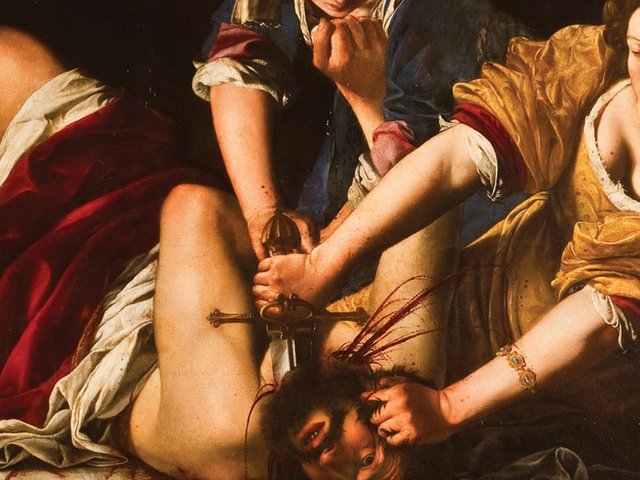Lynn Hershman Leeson’s film “WAR! Women Art Revolution” perfectly embodies the feminist assertion that the personal is political. Using interviews filmed over a 40-year period, Hershman Leeson, herself an artist and activist, documents the feminist art movement in the US, interspersing the recollections of artists such as Judy Chicago, Nancy Spero, Rachel Rosenthal, Howardena Pindell and Martha Wilson (among many, many others) alongside art historians including Lucy Lippard and Arlene Raven, and featuring archive footage of performances and protests. It’s a sweeping history that ranges from the early days of the women’s liberation movement emerging out of the civil rights struggles of the 1960s, via the public furore over Chicago’s The Dinner Party, 1974-79; the establishment of women-only teaching spaces at the California Institute of the Arts (CalArts); the protests surrounding the death of artist Ana Mendieta and the murder trial of her husband, Carl Andre [he was acquitted]; to the activism of the Guerrilla Girls and the suspicions that many young, female artists have about the tag feminism and arriving at the exhibition, “WACK! Art and the Feminist Revolution”, at the Los Angeles Museum of Contemporary Art in 2007.
Running throughout is the art itself, much of it overlooked, forgotten and neglected—at least until relatively recently. That the feminist art movement is now regarded as a hugely significant and vital part of art history and production, conspires to create a very personal and political “happy ending”, both for Hershman Leeson and for art historians.
The film’s greatest strength lies in its telling of the history of women in contemporary art from the perspective of the practitioners themselves.
Spero, recorded before her death in 2009, recalls an early attempt to get her work seen at a gallery: “Some friends said to me, ‘if anybody can tell you what galleries you can go along to, what you can do with the stuff, go to Leo Castelli’. So like a fool, I made an appointment, and I went to the uptown gallery. Of course he didn’t see me, Ivan Karp saw me. I was wearing high-heeled boots at the time, and I was really kind of tall… Ivan is small… And there were these sculpture stands all around the place. He didn’t have me put my big tablet on one of these, he had me put it on the floor. So every time I turned a page it was like I was genuflecting to this guy. I felt humiliated. Then he said: ‘What did you bring this to me for?’”
That the feminist art movement was born out of campus radicalism and revolutionary politics is brought into sharp resolution in a clip where Chicago asserts: “They have study groups, they have consciousness raising groups. They read theory: they read Marx, they read Mao, they read Lenin. It’s like you say, ‘How do I make change?’… And we say those of us who are effectively making change are not ignorant. Those people who have effectively made change in the history of the human race were not ignorant.”
From a contemporary perspective, much of the work made by feminist artists seems prescient of the multiple styles and highly personalised work made by many artists today. When the feminist art movement emerged, it was in the shadow of minimalism, the dominant style of the late 1960s and early 1970s, of which the superstar practitioners were almost exclusively men.
For Howard Fox, the curator of contemporary art at the Los Angeles County Museum of Art: “The whole ethos of minimalist art was to arrive at an ever purer notion of what an object could be. Art had reached an impasse that American culture was already breaking through. There had to be an invention of a new kind of art, and that’s exactly when feminism starts in the art world.”
The work produced by women artists when minimalism was the dominant force in the art world now seems fresh. Faith Ringgold’s sculptures and fabric works, Pindell’s collaged structures and wall pieces, graphics by Sheila Levrant de Bretteville (the first tenured female art professor at Yale) all seem vibrant and pertinent, far more of our time than of back then.
But perhaps the most notable change is in the nature of the politics. With effective political radicalism largely absent in the art world, the market rules. And, ironically, it is the market that made this film possible. While Hershman Leeson had taken every opportunity she could to film her peers and hear their stories, the 12,345 minutes of footage could not be shaped until now, owing to lack of funds. She recalls selling some work in 1975, which was returned to her and the sale cancelled, with the comment that buying women artists was a bad investment. She sold nothing for another 17 years, even having a museum reject a large bequest made so her work would be preserved. However, it was a reappraisal 35 years later that valued her cache at 9,000 times its 1975 value and its consequent sale that allowed the film to be completed and to become an invaluable historical document and personal tribute to a movement that changed everything.
o “WAR! Women Art Revolution” will be screened at the Sundance Film Festival this month, and at the Berlin Film Festival in February. For further screening dates and more information see www.womenartrevolution.com. All interviews for the film are being made available at full length by Stanford University library. See http://lib.stanford.edu/women-art-revolution
o See p50 for a review of the book, Nancy Spero: the Work
Originally appeared in The Art Newspaper as 'How women changed the (art) world'



